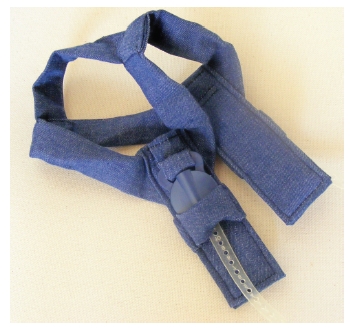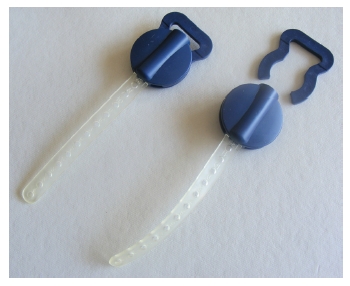Chapter 10
Extra-oral traction and extra-oral anchorage
Of all the appliances, this is the one most patients like least.
Extra-oral traction (EOT) is also known as headgear. It uses positive directional force and the anchorage is from the back of the head or neck.
To get the patient to wear it as instructed for the correct amount of time means that they need to be well motivated and compliant.
It is the only appliance that is worn which has a very visible component because it is worn outside the mouth.
As it is so visible, many patients are willing to wear it while they are at home but are reluctant to wear it to school or on social occasions.
The design of the head cap has now been greatly improved and efforts have been made to make it more patient-friendly. They now come in a range of bright colours and denim material, but this has not changed the general attitude (Figure 10.1).
It can be worn in conjunction with both:
- removable appliances
- fixed appliances
The time scale for wear varies and may be:
- full-time
- 14 hours a day
- just overnight, when asleep for extra oral anchorage (EOA)
It can be used:
- to reinforce anchorage (to prevent the upper molars coming forward)
- to retract the upper buccal segments (to make enough room anteriorly)
Figure 10.1 Head cap.

If teeth may need to be extracted, it would normally be at the back of the dental arch to facilitate distal movement.
Apart from what is normally thought of as headgear, there is a system called reverse-pull headgear. This system aims to advance the maxillary teeth rather than move them backwards and is used in Class lll cases. It requires the use of a face frame for anchorage.
However, it is not used as much as headgear, which aims to distalise or to retain the upper buccal segments to stop them coming forward.
Head caps can have a backward and upward pull.
Cervical (neck) straps rest on the back of the neck and have not only a backward but also a downward pull.
What it looks like
For conventional EOT, there are several different types of head cap and cervical strap available, made from plastic or fabric, with a metal bow.
The face bow
A strong wire component that connects the intra-oral appliance to the extraoral device.
How the headgear is assembled
- The upper appliance (if removable) is fitted in the mouth
- The inner bow of the face bow is inserted into the buccal tubes soldered to the first permanent molar cribs on the appliance in the mouth
- The preformed head cap is fitted over the head
- Attached at the side of the cap in front of the ears are attachments for two sprung C modules which fit onto the sides of the head cap
- These modules are assembled
- The straps which are attached to them have a series of holes
- The outer bow of the face bow is lateral to the cheeks and terminates in hooks to which are fitted the C module straps
- The same level of hole must be used on each side of the head to maintain equal forces
- The headgear and face bow are checked for patient comfort and correct position
Figure 10.2 C modules.

In recent />
Stay updated, free dental videos. Join our Telegram channel

VIDEdental - Online dental courses


